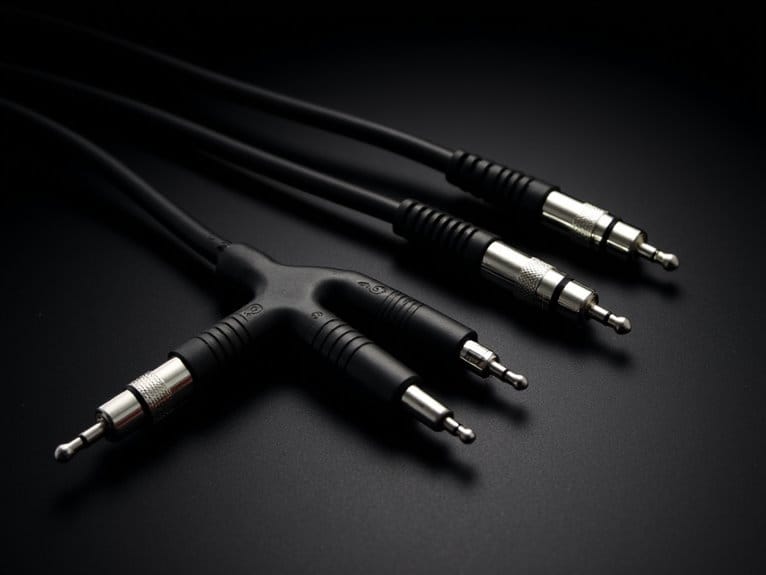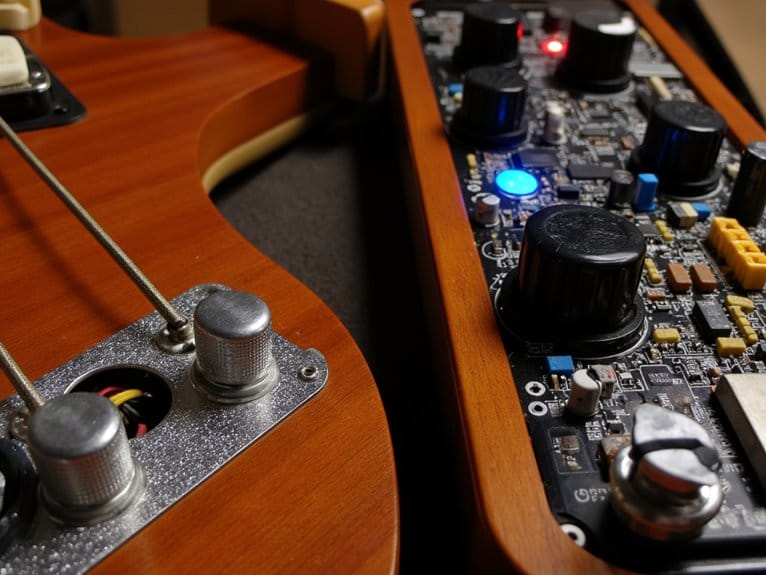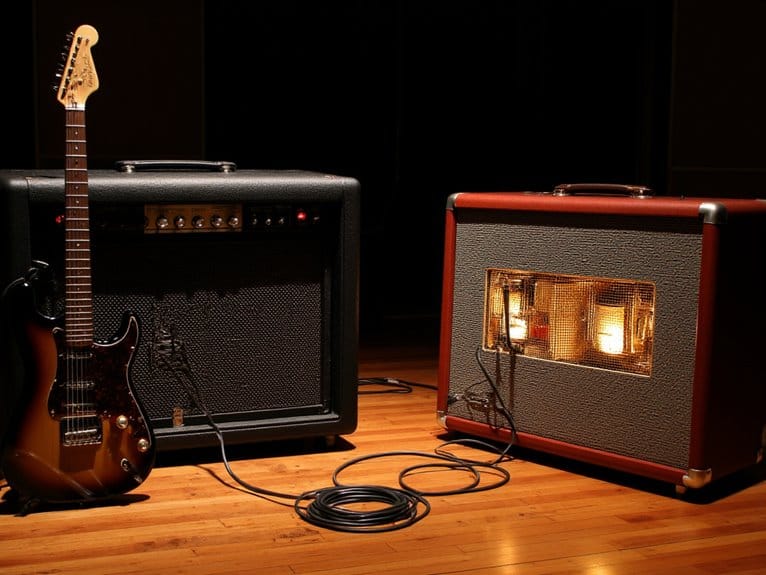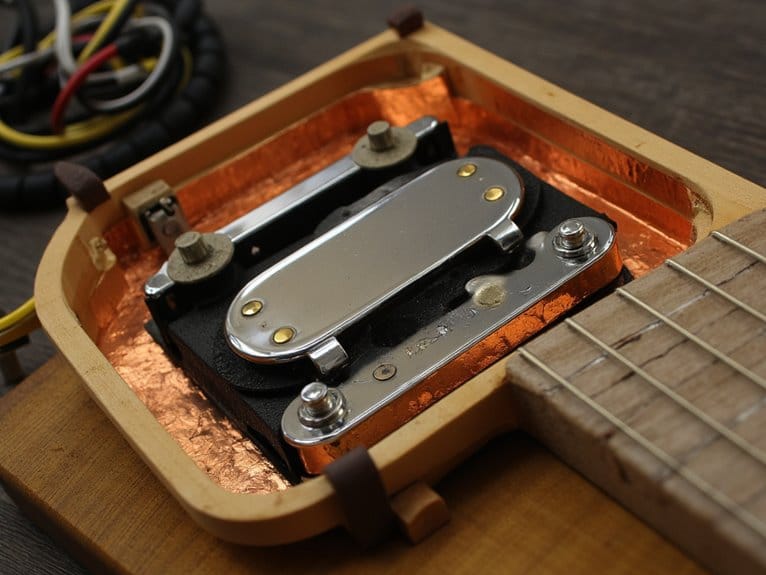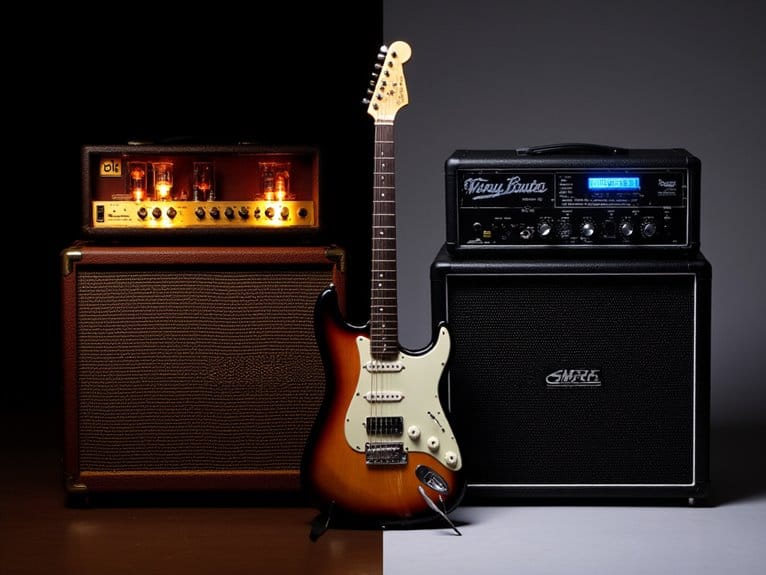Understanding Insert Cables and Y-Cables
Insert cables serve as bridges between your mixing console and external processing gear, featuring TRS connectors that split into two TS plugs to carry send and return signals through a single connection. Y-cables handle signal distribution with their three-ended design, splitting one signal into two outputs or combining multiple signals into a single input while preserving quality through proper impedance matching. Both employ specific wiring configurations where tip carries hot signal, ring handles cold signal, and sleeve provides ground, making them essential for professional studio routing, live sound applications, and complex audio configurations that demand reliable connectivity and signal integrity—though their ideal performance depends on understanding several technical considerations.
We are supported by our audience. When you purchase through links on our site, we may earn an affiliate commission, at no extra cost for you. Learn more.
Notable Insights
- Insert cables bridge mixing consoles and external processors using TRS-to-dual-TS configuration for send/return signal routing.
- Y-cables split one signal into two outputs or combine two signals, featuring three-ended design for distribution tasks.
- Insert cables automatically interrupt signal flow when connected, enabling real-time processing without affecting the overall mix.
- Y-cables preserve signal quality through proper impedance matching and reduce cable clutter in complex audio setups.
- Both cable types require professional connector standards with proper shielding to minimize electromagnetic interference and ensure reliability.
What Are Insert Cables and How Do They Work?
When you’re working with professional audio equipment, insert cables serve as the essential bridge between your mixing console and external processing gear, featuring a distinctive TRS (Tip-Ring-Sleeve) connector on one end that splits into two separate TS (Tip-Sleeve) plugs on the other.
These specialized insert cable types function by intercepting your audio signal at the mixer’s insert point, where the TRS jack carries both send and return signals through a single connection. The tip carries your audio signal out to external processors like compressors or equalizers, while the ring receives the processed signal back, with the sleeve providing common ground.
This elegant design enables seamless signal processing integration, allowing you to enhance individual channels with outboard gear while maintaining your mixer’s signal flow without requiring multiple cable runs or complex routing configurations. Insert connectors operate as switching connectors that automatically interrupt signal flow when inserted, sending audio to external processing before returning to the mixer. Insert cables are also available in various jack sizes including 1/4 inch, 3.5mm, and 2.5mm to accommodate different equipment requirements.
What Are Y-Cables and Their Primary Functions?
You’ll find Y-cables serve as the workhorses of signal distribution, using their distinctive three-ended design to either split one signal into two outputs or combine two signals into a single input through parallel wiring configurations that maintain electrical integrity.
These versatile connectors excel at handling common audio tasks like sending a single headphone output to two separate speakers, or routing stereo signals from a 3.5mm jack to dual RCA inputs on your amplifier, all while preserving signal quality through proper impedance matching.
I’ve seen countless studio setups rely on Y-cables for quick signal routing solutions, since their parallel wiring design prevents the voltage division issues that would occur with series connections, making them reliable tools for both professional and consumer applications. The cable clutter reduction becomes immediately apparent when a single Y-cable replaces multiple individual connections in complex audio configurations.
Signal Splitting and Combining
Although they might look deceptively simple, Y-cables represent one of the most versatile and essential tools in any audio engineer’s arsenal, serving the dual purpose of splitting single signals into multiple outputs or combining separate inputs into unified pathways.
When you’re splitting signals, you can route one microphone to your main recorder and backup device simultaneously, or send a single output to multiple amplifiers without losing signal integrity.
For combining applications, you’ll find these cables invaluable when merging stereo channels into mono outputs for subwoofers, or when your setup requires feeding multiple line-level sources into audio mixers that only accept single inputs, eliminating the need for complex routing hardware.
When managing complex signal routing, using multiple Y-cables alongside DI boxes enhances versatility by ensuring proper signal distribution and tailored input/output options for various instruments simultaneously.
Parallel Wiring Design
At their most fundamental level, Y-cables embody the elegant simplicity of parallel wiring design, where a single input connector branches into two identical output paths that carry the exact same audio signal simultaneously.
| Component | Function |
|---|---|
| Input Connector | Receives original audio signal |
| Parallel Wiring | Maintains identical voltage across outputs |
| Output Connectors | Deliver simultaneous signal distribution |
| Shielding | Reduces electromagnetic interference |
| Conductive Materials | Minimize signal loss during transmission |
This parallel wiring configuration guarantees you’re getting consistent signal strength across both outputs, though it’s worth noting that impedance matching becomes essential when connecting multiple devices. The beauty lies in their passive design – no batteries, no power supplies, just straightforward copper pathways that split your signal efficiently while maintaining audio clarity and preserving the original signal’s integrity.
Common Audio Applications
Building on this foundation of parallel signal distribution, Y-cables find their most practical expression in everyday audio scenarios where you need to send one signal to multiple destinations without compromising quality.
Let me walk you through the primary applications where Y-cables excel at maintaining signal integrity while enabling flexible audio routing:
- Stereo-to-mono splitting – Converting your 3.5mm stereo output into separate RCA left and right channels for connecting to amplifiers or recording equipment.
- Live sound reinforcement – Simultaneously feeding your audio signal to both main PA systems and stage monitors, giving performers better monitoring without feedback issues.
- Parallel processing chains – Sending the same source signal through multiple effect processors or recording devices, allowing creative sound layering and treatment options.
These applications leverage Y-cables’ strength in signal distribution while avoiding the pitfalls of improper signal combining that can damage equipment.
Wiring Configurations and Connector Types
When you’re working with insert cables, you’ll encounter TRS to TS splitting configurations that transform your single stereo or balanced connection into separate mono outputs, typically used for effects sends and returns in studio environments.
Professional connector standards, which I’ve found vary quite a bit between manufacturers, dictate specific wiring schemes where the tip carries your hot signal, the ring handles either cold signal or secondary channel information, and the sleeve provides ground reference for proper signal integrity.
Understanding these wiring configurations becomes essential when you’re troubleshooting signal routing issues, since improper connections can result in phase cancellation, ground loops, or complete signal loss in your audio chain.
TRS to TS Splitting
While TRS to TS splitting might seem like a straightforward cable conversion, I’ve found that understanding the underlying wiring configurations can save you from frustrating signal issues and expensive mistakes down the road.
When you’re working with TRS specifications, you’re dealing with three conductors: tip, ring, and sleeve, where the sleeve acts as your common ground for both output signals.
Here’s how proper cable shielding and wiring work in practice:
- Tip Assignment – The TRS tip connects to your first TS cable’s tip, carrying one channel or send signal.
- Ring Connection – The TRS ring maps to your second TS cable’s tip for the return or opposite channel.
- Common Ground – Both TS sleeves share the TRS sleeve connection, maintaining proper signal reference.
Quality connectors like Neutrik guarantee reliable connections, especially in professional applications where signal integrity matters most.
Professional Connector Standards
Three primary connector families dominate professional audio installations, and I’ve learned that understanding their specific wiring configurations can mean the difference between pristine signal transmission and frustrating noise issues that plague your entire system.
XLR connectors follow AES standards with pin 1 for ground, pin 2 for positive signal, and pin 3 for negative signal, creating balanced transmission that rejects interference.
TRS configurations use tip for positive, ring for negative, and sleeve for ground in balanced applications.
Euroblock connectors simplify installations with screw terminals that eliminate soldering requirements.
However, connector compatibility becomes essential when mixing equipment from different manufacturers, as standardization challenges can create unexpected wiring mismatches that compromise your audio chain’s performance and reliability.
Professional audio interfaces commonly feature XLR and 1/4-inch TRS inputs that support these standard wiring configurations, making proper connector selection crucial for maintaining signal integrity throughout your recording chain.
Quality preamps in modern interfaces enhance signal clarity and provide the necessary gain for microphones while maintaining the integrity of these connector standards.
Condenser microphones require phantom power to operate, typically supplied at 48V through XLR connections, which enhances their performance when properly configured with compatible interfaces.
Professional Applications in Studio and Live Sound
In professional audio environments, insert cables serve as the unsung workhorses that bridge the gap between your mixing console and external processing equipment. They allow you to seamlessly integrate compressors, equalizers, and other dynamics processors into individual channel strips without disrupting your overall signal flow.
I’ve found these TRS-to-dual-TS configurations particularly valuable because they maintain signal integrity while providing precise control over individual channels.
The insert cable benefits become apparent in three key applications:
- Studio channel processing – applying compression or EQ to specific tracks without affecting your entire mix
- Live vocal enhancement – adding real-time reverb or gating to stage microphones
- Monitor routing flexibility – creating dedicated processing chains for different performers
While y cable drawbacks include potential impedance mismatches, insert cables offer reliable, professional-grade signal routing that’s essential for both studio and live applications. For optimal performance, maintaining proper signal-to-noise ratio becomes crucial when chaining multiple processors through insert points to preserve audio clarity.
Frequently Asked Questions
Can I Use a Regular Stereo Cable as an Insert Cable?
You can’t use a regular stereo cable as an insert cable due to insert cable specifications requiring separate send/return paths. Stereo cable limitations include lacking the proper TRS-to-dual-TS wiring configuration needed for effects loops.
Do Insert Cables Work With Unbalanced Equipment?
Yes, you can use insert cables with unbalanced equipment. Insert cable compatibility with unbalanced audio works well for short runs, though you’ll lose balanced connection benefits and may experience increased noise susceptibility.
Can Y-Cables Cause Impedance Matching Problems?
Yes, you’ll experience impedance issues when Y-cables parallel multiple loads, reducing total impedance your source sees. This can affect sound quality, especially with microphones, though line-level signals typically handle the mismatch better.
On a final note
You’ve now got the foundation to tackle insert cables and Y-cables with confidence, whether you’re patching effects in your home studio or managing complex signal routing during live performances. These aren’t glamorous pieces of gear, but they’re absolutely essential for professional audio work. Remember, investing in quality cables with proper shielding, reliable connectors, and appropriate gauge wire will save you countless headaches down the road when signal integrity matters most.

